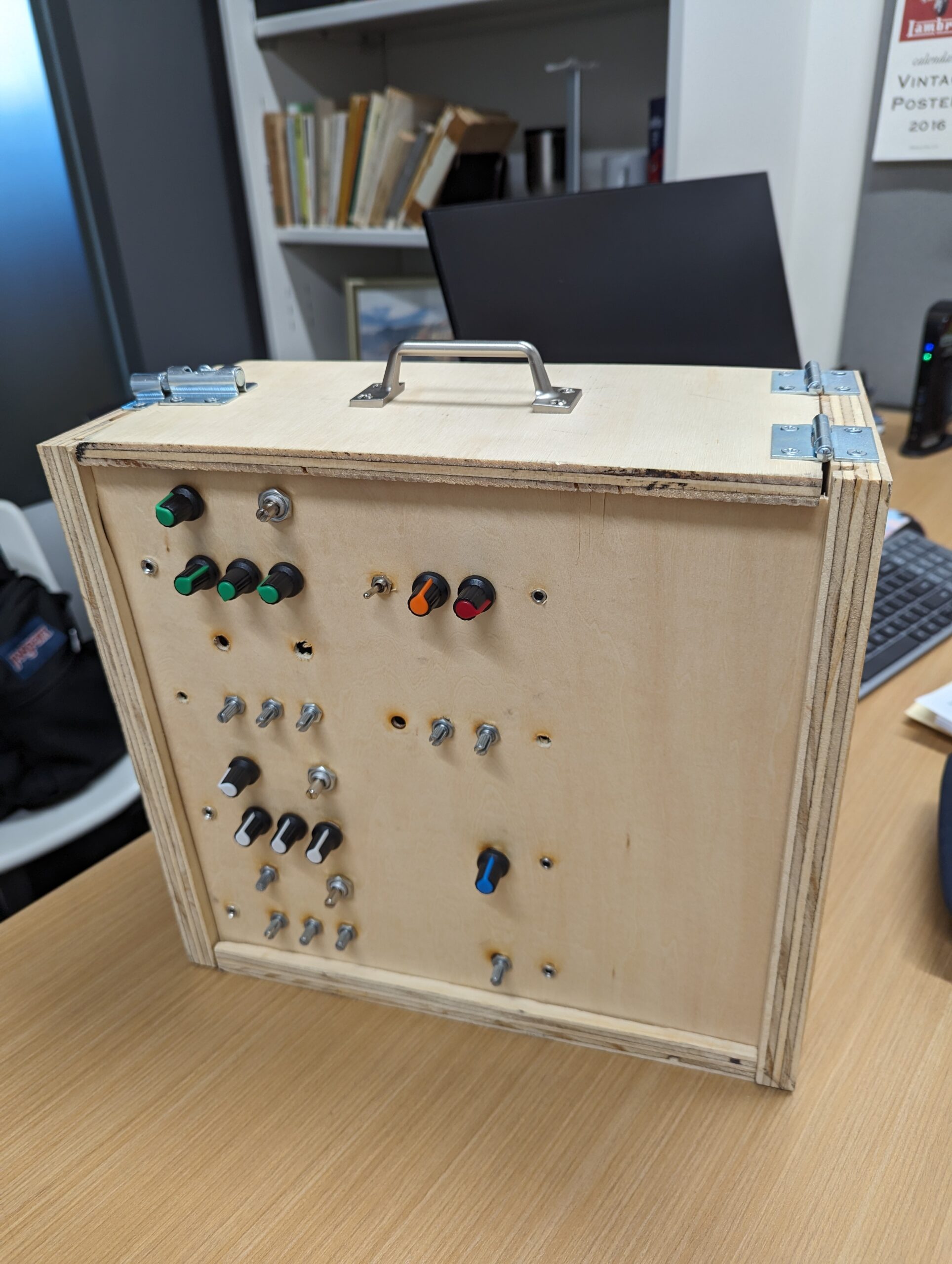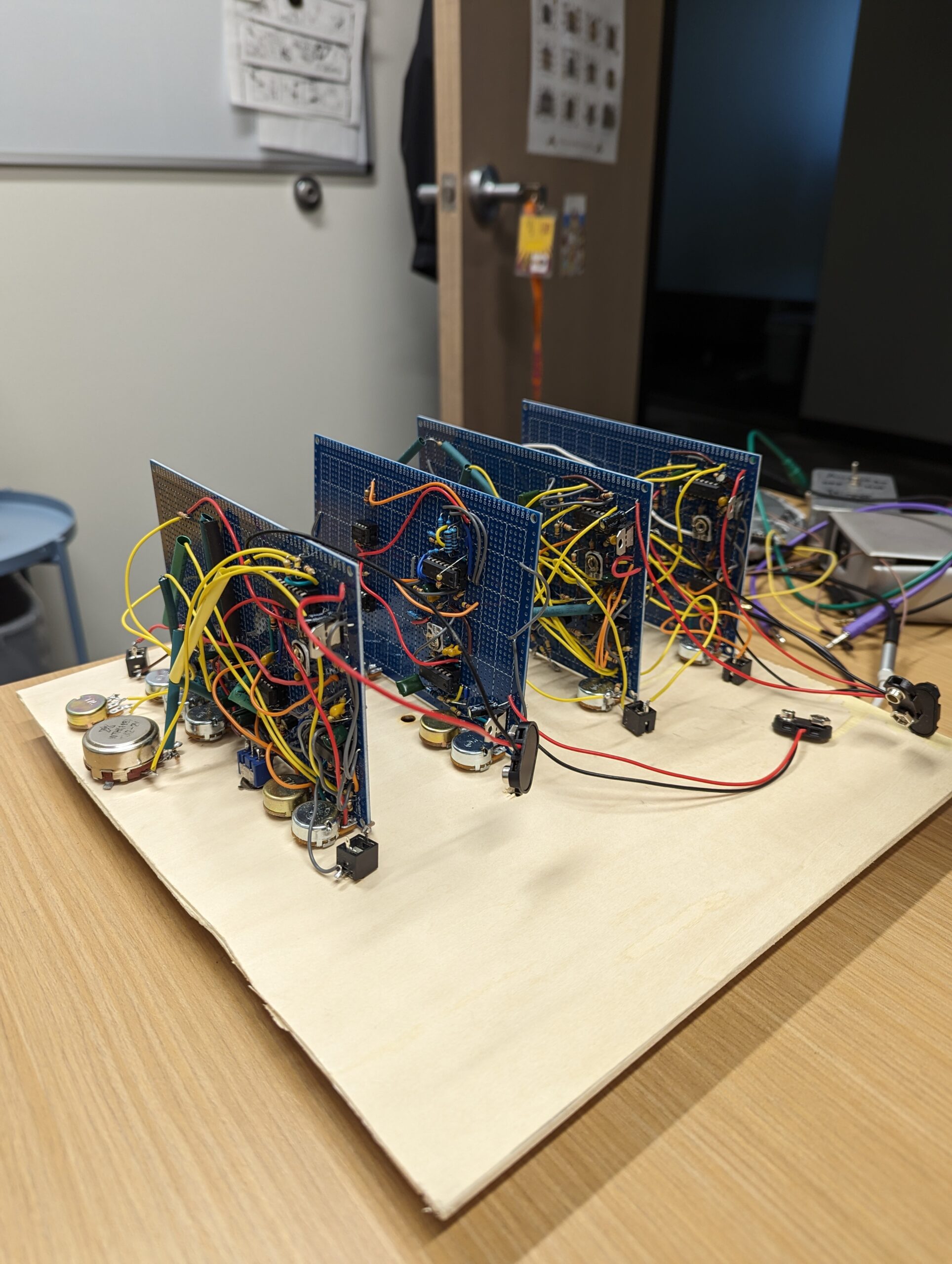Students’ final projects took many different forms and were showcased at Noisefest!
All of the students manipulated sounds in Max MSP which they then made available to users on and off campus as interactive multi-sensory experiences of the territory. Anyone can play with these manipulated sound/noise artifacts using a MIDI controller like the one below.

Other projects included a noise intoner, a 2D laser cut map of Waterville, ME connected to an Arduino board, a Rhythm Harmonizer, and a sound-based virtual reality tour of Waterville.
A noise intoner, or “intonarumori” in Italian, makes a mechanic, grinding sound. This instrument was invented by Luigi Russolo in the early 1900s and employed by Futurist musicians in concerts and exhibitions as a way to incorporate the acoustic signature of the modern city into their musical compositions and thus “transform” urban and industrial noise into musical sound. The video below shows the noise intoner in action.
The 2D laser cut map of Waterville, ME was created in the Colby Mule Works Innovation Lab. Arduino knobs were inserted into the map to control the volume, speed, and pitch of each sound sample from the various locations indicated on the map. Wires were soldered to each knob and then connected to an Arduino board. If you would like more information about this board or are interested in the code used to program the Arduino components, email me or consult “Noisemakers! Putting the Analog in Digital Humanities” by Serena Ferrando and Mark Wardecker. (2019)
Below are images of the map.


The Rhythm Harmonizer is an experimental drum machine that aims to get people more interested in the science of sound by showing the relationship between rhythm and harmony.
The virtual reality tour was built using Unity 3D. Using this software, the students were able to pair previously recorded sounds to video recordings of Waterville and 360-degree images to produce an immersive experience using the VR headset. Below is a very short video utilized in the VR experience (without, of course, the interactive aspect of it).

